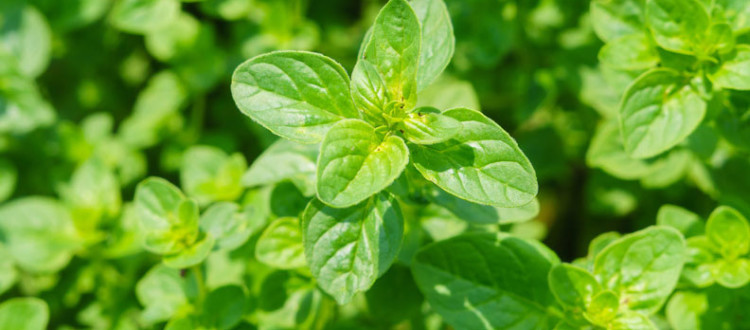Oregano
Oregano, (Origanum vulgare) is a perennial herb native to the Mediterranean, and is a member of the mint family. Greek oregano (O. vulgare hirtum) has gray green leaves. Italian (or Mediterranean) oregano (O. x majoricum) has milder, bright green leaves. The word oregano is derived from two Greek words, ‘Oros’ (mountain) and ‘Ganos’ (joy) since it grows wild on the mountains of Greece and is beautiful to look at. Sometimes referred to as “wild marjoram” since it resembles sweet marjoram, oregano is very aromatic and imparts greater flavor when dried than when fresh. Soldiers returning from WW II popularized oregano in the US after tasting it in Italian dishes.
The opposing leaves are bright green and produce a small white flower on its runners and are best grown in containers or low walls where they can spill over. The runners oregano produces make it suitable for use as a border along garden paths or walkways.
How to Plant
Oregano loves full sun and a soil pH between 6.5 and 7.0. Be certain the soil drains well to avoid disease and pest infestation. Remove any dead or discolored leaves and chop it back to a third of its size in late spring or early summer. Removing dead stems after winter helps promote new growth.
Fertilizing
Oregano, like many herbs, doesn’t require a lot of fertilizer, so use a balanced organic fertilizer in the spring.
Harvesting
Begin harvesting oregano leaves as soon as the plant is several inches tall. The flavor reaches its peak just before flowering in mid-summer. Cut the stems just below the lowest set of leaves in mid-summer. This will give the plant time to reach the its flavor peak again by late summer.
Dried oregano leaves impart more flavor than fresh leaves, so allow the harvested stems and leaves time to air dry before using.
Recommendations for Use
- Oregano is a key ingredient in Greek and Italian cuisine
- Dried oregano is better used when simmering for an extended period, such as in pasta sauces
- Fresh leaves will not hold their flavor so they are best used to brighten a prepared dish just before serving
- Use oregano with marinades, beans, cheeses, eggs, meats, pastas, salsas, sauces, soups, stews, and vegetables

